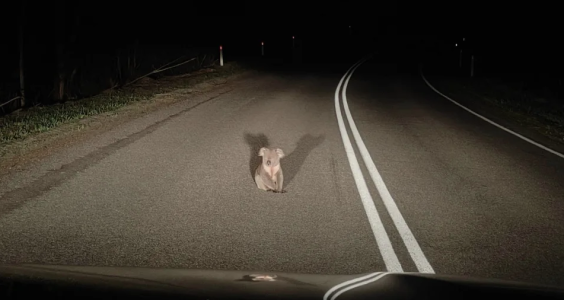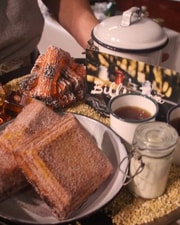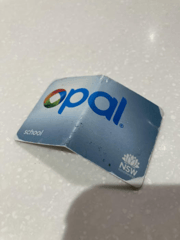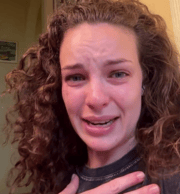Tourist faces eerie late-night encounter on this Aussie island, issues warning to other drivers
By
VanessaC
- Replies 7
Australia is a land of enchanting wildlife and breathtaking landscapes, drawing tourists from all corners of the globe.
Many arrive with hopes of spotting the unique creatures that call this vast country home.
While you might not see platypus by the Sydney Harbour Bridge or kangaroos at the Melbourne Cricket Ground (MCG), a drive around the more secluded areas, such as Kangaroo Island, can bring you face-to-face with some of Australia's most iconic animals, including the adorable koala.
However, this close encounter with nature can turn perilous for both wildlife and drivers, especially after the sun sets.
The island's beauty is matched by the need for vigilance on its roads, as tourists unfamiliar with the terrain can find themselves in dangerous situations.
A recent incident has prompted a stark warning for all visitors: slow down and save lives.
Wildlife Photographer Phil Bromley's late-night experience serves as a chilling reminder.
His haunting image, captured with a mobile phone, shows a koala sitting in the middle of the road—a potential disaster in the making.
Bromley, who was returning from the island's wild southern end, was fortunate to have been driving below the 100 km/h speed limit when he turned a corner and spotted the marsupial.
Had he been going faster, the outcome could have been tragic.
Bromley's encounter is not an isolated incident.
'I think the locals understand there is a lot of wildlife. There are kangaroos and wallabies galore when you’re going back to your motel. It could be a half hour or a 45-minute drive, and it’s almost impossible not to come across any animals,' he explained.
'There’s hardly a time I ever do the speed limit around there. It’s the same around places like Uluru, things pop around left, right, and centre, and you just can’t do the 100 km/ph speed limit.'
His advice is clear: slowing down at night on country roads is essential, a sentiment echoed by government and insurers alike.
The issue of wildlife on roads is particularly poignant for Kangaroo Island's koalas.
In March, the island's koalas made headlines for a more somber reason, as allegations surfaced of timber harvesters causing harm to the animals during tree bulldozing operations.
Such practices, while not new to regions in South Australia and Victoria, have sparked fears that Australia's reputation as a wildlife haven could be tarnished, potentially deterring tourists.
Bromley, a nature lover, was horrified by the footage of these incidents on Kangaroo Island.
He hopes his photo will not only raise awareness but also help protect the region's vulnerable koalas.
The response to Bromley's message has been mixed on social media.
Some argue that stopping on corners or promoting slow driving can be dangerous on country roads.
'Stopping on corners is dangerous on country roads and promoting slow driving is also,' one wrote.
While another said: 'The faster you go the less time you spend on the road, less chance of hitting one.'
However, many supported Bromley's call to action, recognising that koalas 'are certainly on the move at the moment'.
'If you're visiting or live here, it would be terrific if you understood the plight of the animals,' a third wrote.
 What are your thoughts on this story? Have you ever encountered a koala while driving? Share your thoughts and stories with us in the comments below!
What are your thoughts on this story? Have you ever encountered a koala while driving? Share your thoughts and stories with us in the comments below!
Many arrive with hopes of spotting the unique creatures that call this vast country home.
While you might not see platypus by the Sydney Harbour Bridge or kangaroos at the Melbourne Cricket Ground (MCG), a drive around the more secluded areas, such as Kangaroo Island, can bring you face-to-face with some of Australia's most iconic animals, including the adorable koala.
However, this close encounter with nature can turn perilous for both wildlife and drivers, especially after the sun sets.
The island's beauty is matched by the need for vigilance on its roads, as tourists unfamiliar with the terrain can find themselves in dangerous situations.
A recent incident has prompted a stark warning for all visitors: slow down and save lives.
Wildlife Photographer Phil Bromley's late-night experience serves as a chilling reminder.
His haunting image, captured with a mobile phone, shows a koala sitting in the middle of the road—a potential disaster in the making.
Bromley, who was returning from the island's wild southern end, was fortunate to have been driving below the 100 km/h speed limit when he turned a corner and spotted the marsupial.
Had he been going faster, the outcome could have been tragic.
Bromley's encounter is not an isolated incident.
'I think the locals understand there is a lot of wildlife. There are kangaroos and wallabies galore when you’re going back to your motel. It could be a half hour or a 45-minute drive, and it’s almost impossible not to come across any animals,' he explained.
'There’s hardly a time I ever do the speed limit around there. It’s the same around places like Uluru, things pop around left, right, and centre, and you just can’t do the 100 km/ph speed limit.'
His advice is clear: slowing down at night on country roads is essential, a sentiment echoed by government and insurers alike.
The issue of wildlife on roads is particularly poignant for Kangaroo Island's koalas.
In March, the island's koalas made headlines for a more somber reason, as allegations surfaced of timber harvesters causing harm to the animals during tree bulldozing operations.
Such practices, while not new to regions in South Australia and Victoria, have sparked fears that Australia's reputation as a wildlife haven could be tarnished, potentially deterring tourists.
Bromley, a nature lover, was horrified by the footage of these incidents on Kangaroo Island.
He hopes his photo will not only raise awareness but also help protect the region's vulnerable koalas.
The response to Bromley's message has been mixed on social media.
Some argue that stopping on corners or promoting slow driving can be dangerous on country roads.
'Stopping on corners is dangerous on country roads and promoting slow driving is also,' one wrote.
While another said: 'The faster you go the less time you spend on the road, less chance of hitting one.'
However, many supported Bromley's call to action, recognising that koalas 'are certainly on the move at the moment'.
'If you're visiting or live here, it would be terrific if you understood the plight of the animals,' a third wrote.
Key Takeaways
- Wildlife Photographer Phil Bromley captured an image of a koala sitting in the middle of the road on Kangaroo Island to highlight the dangers of driving too fast in areas with wildlife.
- Tourists are being warned to slow down at night on country roads to avoid collisions with local wildlife, such as koalas, which can be devastating for both the animals and the drivers.
- There has been recent concern over the welfare of Kangaroo Island's koalas after allegations that timber harvesters were killing and injuring them, which could potentially tarnish Australia's image and affect tourism.
- While some social media users disagreed with the advice to slow down, others supported the message, emphasising the importance of being aware of and considerate towards the local wildlife when driving in these areas.








